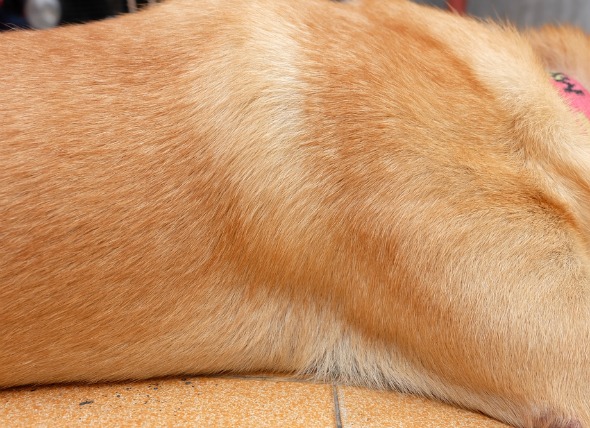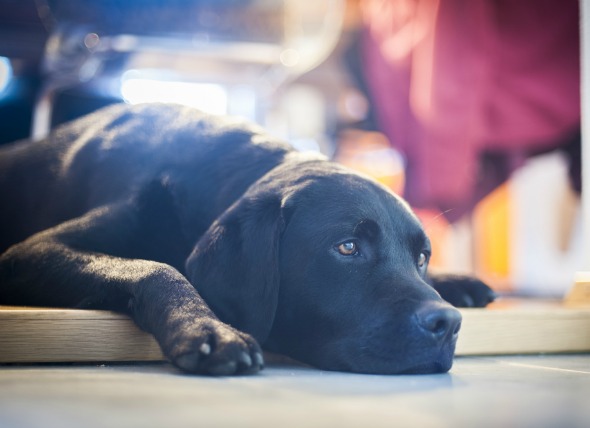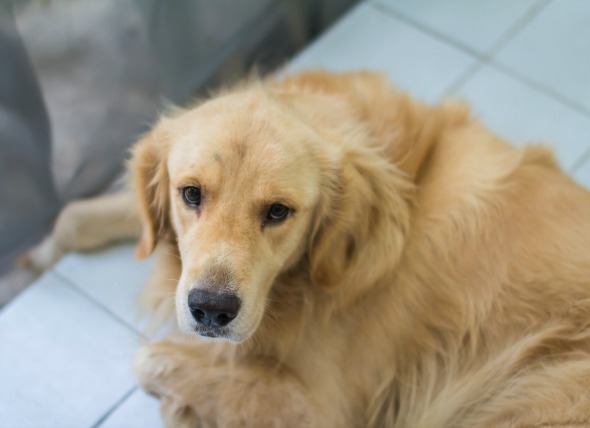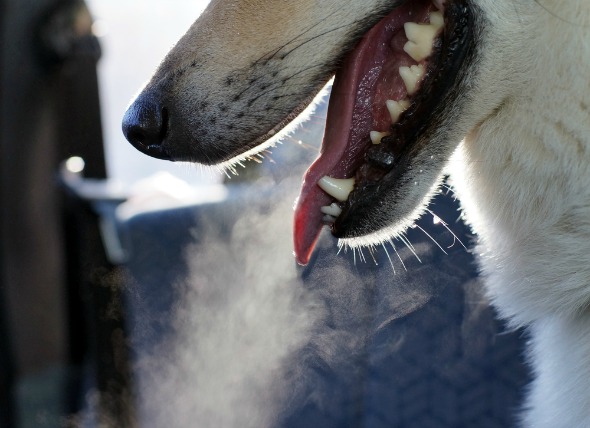

Seborrhea is a skin condition in dogs that causes flaky skin (dandruff) and greasiness of the skin and hair. This disorder is very common and can lead to a secondary infection of the skin. Often, dogs will smell bad due to the buildup of oil on the skin and hair.
There are two common forms of seborrhea: oily (oleosa) and dry (sicca). The majority of animals will have a combination of both oily and dry seborrhea.
Seborrhea causes the skin to exude a waxy, greasy substance that clumps up in the ears, under the belly and armpits, elbows, and around the ankles. The substance is very fatty in nature and it will cause a distinctive odor. Dogs may scratch at the affected areas leading to bleeding, crusting, hair loss, and secondary infections due to skin damage.
Dogs with this inherited disorder are affected with either the idiopathic or primary form of the seborrhea disease. It usually afflicts the animal before he/she reaches two years of age and progresses as he/she gets older. The breeds most commonly afflicted with inherited seborrhea include:
In other animals, the condition is secondary to another disease process. Primary conditions/diseases that can lead to the onset of seborrhea include:
Some of the tests your veterinarian will run will rule out primary causes of skin disease. This may include a thorough physical examination; skin scrapings for parasites; fungal and bacterial cultures of the skin and hair; a fecal examination; and blood tests (CBC, chemistry panel) to rule out allergies, endocrine diseases, and dietary/digestive disorders. Sometimes a biopsy of the skin may be necessary. A diagnosis of primary (inherited) seborrhea is made only once all other causes have been ruled out.
As it is not possible to cure idiopathic seborrhea, treatment will mainly focus on controlling the condition. This may include using a combination of shampoos and conditioners to keep the skin clean and to soothe the animal. Common preparations of shampoos include sulfur, salicylic acid, benzoyl peroxide, and coal tar (such as seen in human acne and dandruff medications). Your veterinarian will let you know which combination and frequency of bathing best works for your pet’s condition.
Fatty acids and vitamin/mineral supplements may help in cases of a deficiency or a condition that responds to certain vitamins and minerals in the diet. If your dog contracts a secondary infection, other therapies such as antibiotics (oral and topical), antifungals, and sometimes allergy medications may be necessary.
Nutrition is vital part of managing seborrhea. Consult with your veterinarian for an appropriate dietary and supplement regimen for your dog. In addition, keep your pet clean and well hydrated. This will help control the condition and reduce the chances that a secondary infections develop. Lastly, schedule regular follow-up exams with your veterinarian to monitor the dog's skin condition.
 Canine Coronavirus Infection in Dogs
Canine Coronavirus Infection in Dogs
A canine cor
Canine Coronavirus Infection in Dogs
Canine Coronavirus Infection in Dogs
A canine cor
 Inflammation of the Esophagus in Dogs
Esophagitis in Dogs
Gastrointestinal reflux, or a
Inflammation of the Esophagus in Dogs
Esophagitis in Dogs
Gastrointestinal reflux, or a
 Low Body Temperature in Dogs
Hypothermia in Dogs
Hypothermia is a medical cond
Low Body Temperature in Dogs
Hypothermia in Dogs
Hypothermia is a medical cond
 Hookworms in Dogs
Ancylostomiasis in Dogs
Hookworms can be f
Hookworms in Dogs
Ancylostomiasis in Dogs
Hookworms can be f
 Allergic Shock in Dogs
Anaphylaxis in Dogs
Anaphylaxis is an emergency c
Allergic Shock in Dogs
Anaphylaxis in Dogs
Anaphylaxis is an emergency c
Copyright © 2005-2016 Pet Information All Rights Reserved
Contact us: www162date@outlook.com